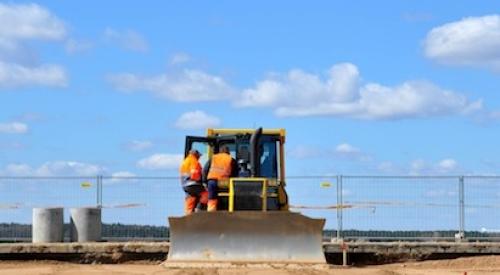|
What began as a predicted 5 percent slowdown for 2006 has now passed 10 percent nationwide and may reach 15 percent, or more.
Some of the nationals are really hurting, with one of the Top 10 builders reporting sales down 45 percent as of August. With a new article coming out nearly every day on the housing downturn, it seems unlikely that things will turn around soon.
 "One of the unique aspects of this slowdown is that so few managers, including many at the most senior levels in home building today, have experienced a downturn of major proportions." - Scott Sedam |
I'm not sure this explains why, despite the negative indicators during that last half of 2005, most large builders kept their production pace through the spring, building unsold inventory to levels that now exacerbate this problem. Who was calling the shots? Readers of this column have come to expect my radical propositions, so here you go. I believe that when all is said and done, this lack of experience in management could turn out to be a good thing.
Historically, the reaction to downturns has been so consistent that you can put it into a formula: slash overheads, lay off people, cut production, stop hiring, stop buying land and hammer your suppliers and trades. Not much creativity in that.
I don't trivialize how painful those steps are, but you don't have to be a 30-year grizzled veteran to carry them out. I also do not deny the need for action in these areas to get home builders through tough times. I can predict, however, that most will go further than they need and do a lot of damage. In the process, builders will miss the best opportunities to rethink the way they do business — opportunities that can both pay off on their own and reduce the need to carry out many of the other steps. It could be that the "young guard" might have a natural advantage over the "old guard" in pursuing some new ways to reduce costs and run the business. Let me amend that. They are actually old ways — just new to the building industry.
If you want to follow the whole thought process, I suggest you go back and read "Your Choice in Cost Control" in April's Professional Builder and "That's Where the Money Is" in July's edition. In the first column, I blasted the slash-overheads solution as a drop in the bucket compared to house costs and land development costs, imploring readers not to inhibit their ability to find the real money. In the second column, I cited 10 specific areas where a builder can find significant dollars, increasing margins while reducing the need for overzealous budget cutting that will come back to haunt you.
Our FlawsThose 10 areas touched virtually every area of the business, but let's focus on just one, the building process. From graded lot to final, this is a clearly identifiable, readily measurable process. Sometimes, though, I'm mystified by what happens in the field.
The most obvious issue is scheduling, and, as an industry, we are just lousy. Ask any supplier. Ask any trade. Or write down your number of closings for every week over the past two years and stare at it a while. If you have any sensibilities toward an orderly process, you should find them heartily violated.
Although home building materials have changed over the past 50 years, very little has changed in the process. It's the same setup as a project superintendent drawing 40 or 50 suppliers and trades from a pool of hundreds and trying to coordinate them on-site. It gets the job done with gross inefficiencies and a horrific amount of rework. No one knows the national average for construction cycle time, but I'll peg the median at 120 days for production homes. (In this case, midpoint makes more sense than the average.)
What should it be? I know; it could easily be 60, and enough builders have done it to prove that virtually everyone can — and in the case of houses anyway, size doesn't matter. If you reduced your cycle time to 60 days on a consistent basis, you would save far more than simply cutting two months out of your carrying costs on land, which in itself is considerable. Work-in-process inventory would fall dramatically. Supervision cost per house would be cut in half. You would become so tight and so efficient that rework, errors and omissions would fall and quality would rise; most of your rework would be eliminated. Do that and you can stop knee-jerking your overheads, demoralizing your work force and destroying your supplier and trade relationships.
You call this an impossible dream? Then answer this question: why has virtually every other industry that manufactures a product — from agriculture to transportation — seen order-of-magnitude increases in productivity and efficiency over the past 50 years and not home building?
We were just having too much fun doing what we were doing to attend. Over the past 15 years, we have made so much money doing things the way we've always done them that there was no reason to pay attention to what was going on in the world around us.
Lean Production Can WorkThere has been a revolution, and we missed it. The revolution is called lean production and it was perfected by Toyota. Lean production — when you eliminate waste and do more with less — has now completely supplanted Henry Ford's mass production model as the basis for operations in the leading companies and industries around the world.
So this is our opportunity. The pain is here, and I know you feel it. That should provide the motivation to change the way we do things. The key to lean production — lean building — is understanding waste and where it resides in all areas of the business.
Next month we'll take a look at the seven key areas of process waste to get you agitated enough to find and eliminate waste in your own company. How much is there? Twice as much as you have saved in all your overhead slashing, guaranteed, and without all the collateral damage. That's just for starters. If you want to get a head start, go dust off Jim Womack, Dan Jones and Daniel Roos' "The Machine that Changed the World." That's the book your neighbor Chuck the engineer told you to read 15 years ago and you didn't. It was mostly about the automobile industry, for heaven's sake, and what did Chuck know about home building, anyway? We'll see about that, next month.
| Author Information |
| Scott Sedam is president of TrueNorth Development, a nationwide consulting and training firm focused on quality, process improvement and organizational development. |
|











